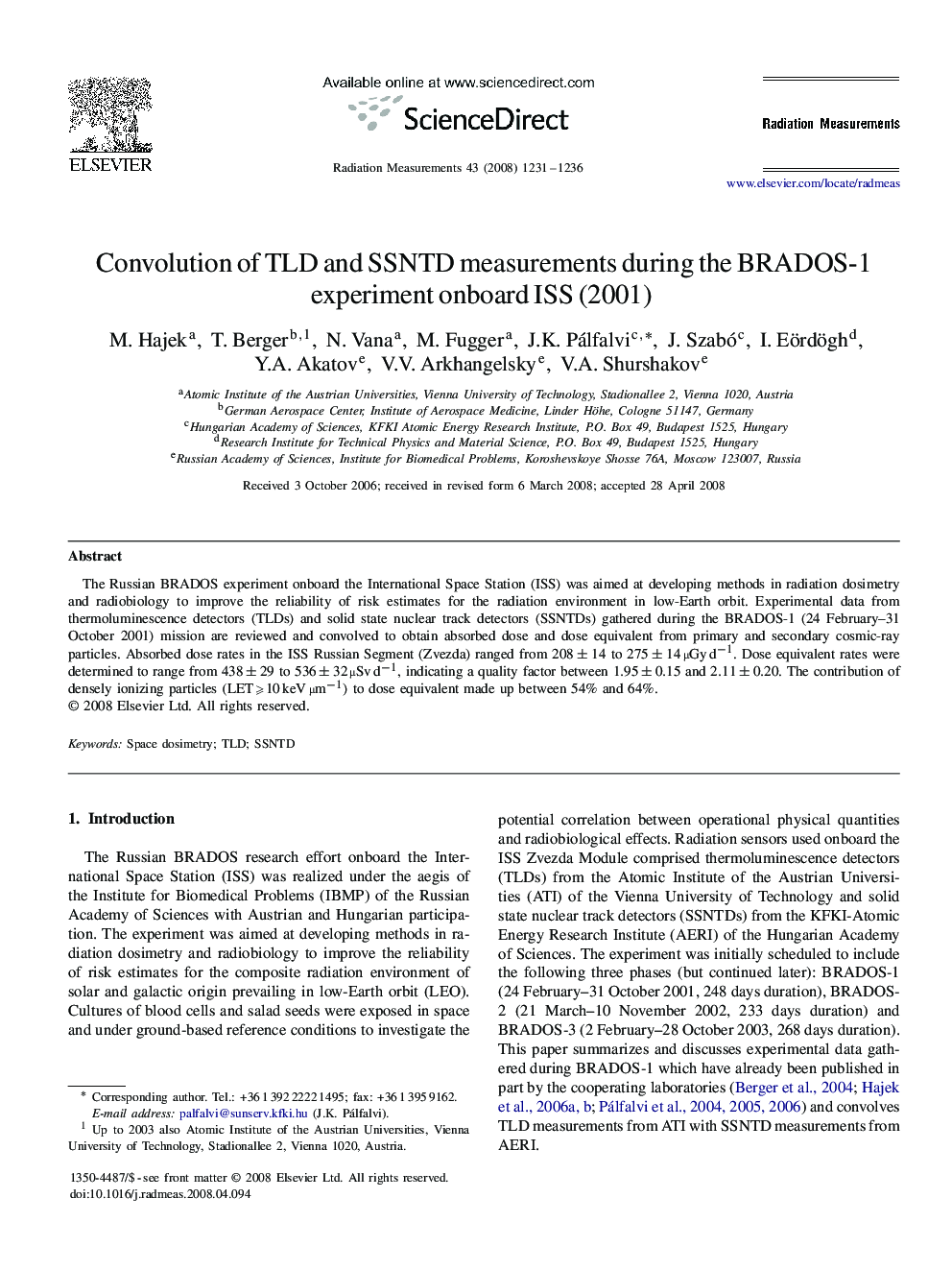| Article ID | Journal | Published Year | Pages | File Type |
|---|---|---|---|---|
| 1888796 | Radiation Measurements | 2008 | 6 Pages |
The Russian BRADOS experiment onboard the International Space Station (ISS) was aimed at developing methods in radiation dosimetry and radiobiology to improve the reliability of risk estimates for the radiation environment in low-Earth orbit. Experimental data from thermoluminescence detectors (TLDs) and solid state nuclear track detectors (SSNTDs) gathered during the BRADOS-1 (24 February–31 October 2001) mission are reviewed and convolved to obtain absorbed dose and dose equivalent from primary and secondary cosmic-ray particles. Absorbed dose rates in the ISS Russian Segment (Zvezda) ranged from 208±14208±14 to 275±14μGyd-1. Dose equivalent rates were determined to range from 438±29438±29 to 536±32μSvd-1, indicating a quality factor between 1.95±0.151.95±0.15 and 2.11±0.202.11±0.20. The contribution of densely ionizing particles (LET⩾10keVμm-1) to dose equivalent made up between 54% and 64%.
